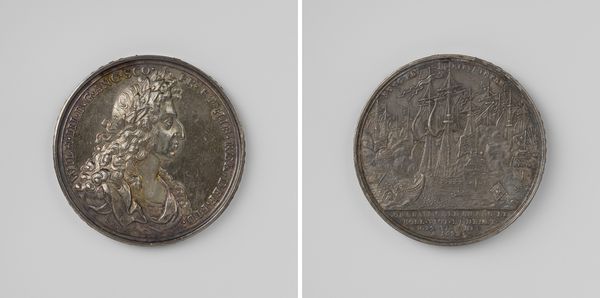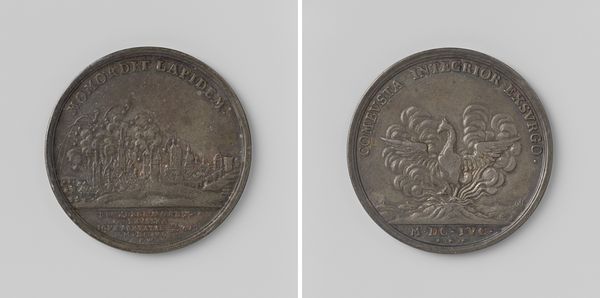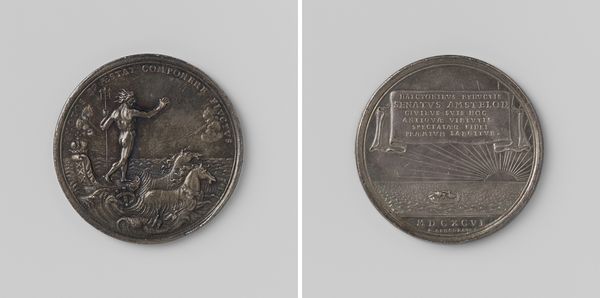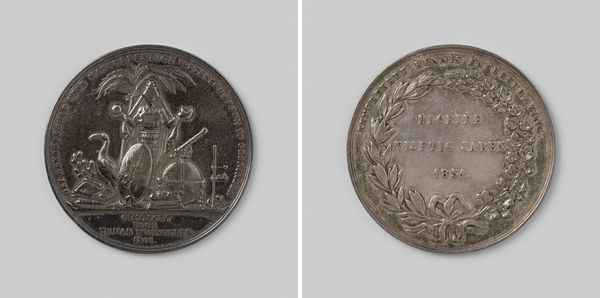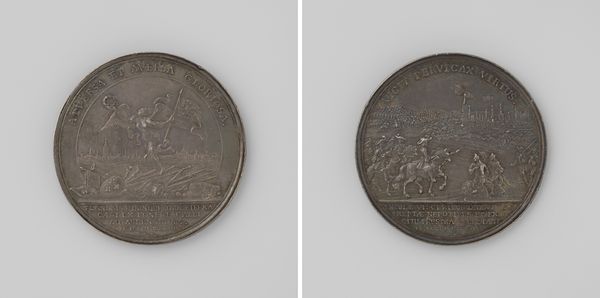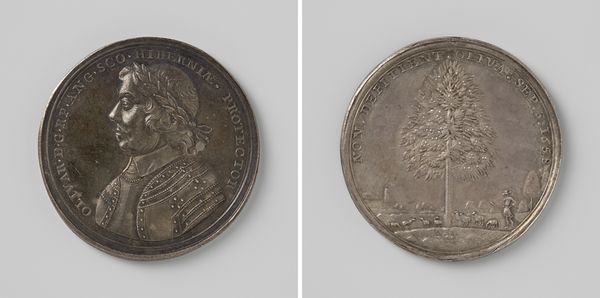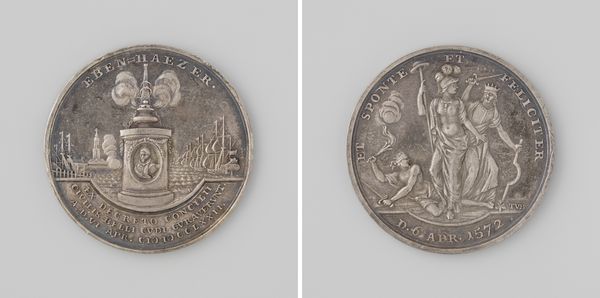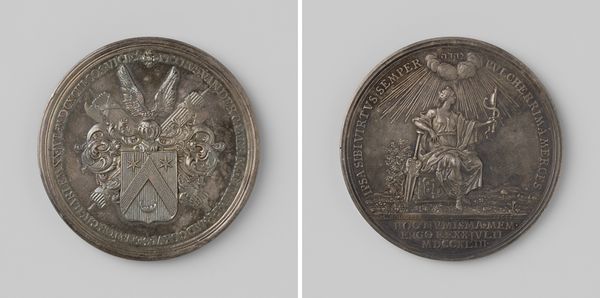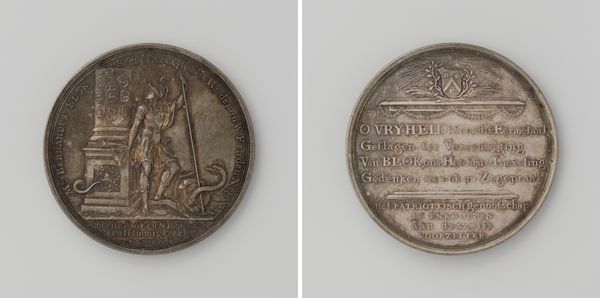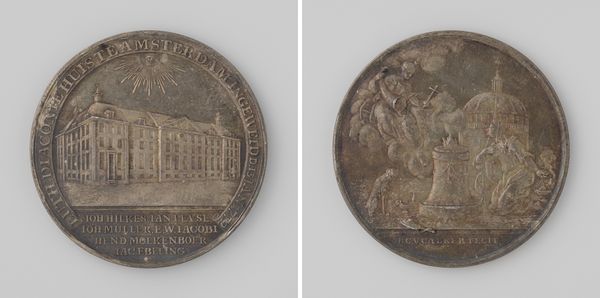
Beloningspenning voor het neerslaan van het aansprekersoproer in Amsterdam 1696 (middelgroot model) 1696
0:00
0:00
metal, relief, sculpture, engraving
#
medal
#
allegory
#
baroque
#
metal
#
stone
#
sculpture
#
relief
#
sculpture
#
history-painting
#
engraving
Dimensions: diameter 3.7 cm, weight 25.68 gr
Copyright: Rijks Museum: Open Domain
Editor: So, this intriguing object is a medal, or 'Beloningspenning,' made in 1696. It commemorates the suppression of the aansprekersoproer—basically, an undertaker's riot—in Amsterdam. Crafted in metal, probably silver. Initially, the scene feels…busy. What's your take on it? Curator: Ah, yes, a snapshot of civic pride hammered into metal! It whispers tales of a city that almost drowned in unrest. Notice the Neptune figure? Commanding the waters, restoring order, quite a dramatic flourish! Consider how these Baroque medals weren't mere decorations; they were PR campaigns, tangible propaganda, celebrating the victors and burying the messy bits beneath layers of allegory. What does that choice of Neptune tell you about the city’s perception of the events? Editor: So, Neptune taming the waves is like the city government taming the chaos? I hadn’t thought of it like that. It feels… almost too celebratory, considering the subject matter. Curator: Exactly! It’s all about crafting a narrative. You see, the Dutch Golden Age had its dark corners, protests about poverty, and societal imbalances which conveniently vanish behind triumphant symbolism. Look at the text inscribed on the other side. The senate is praising virtue in putting down those riots... Editor: It’s a little unsettling, now that I think about it. Like, 'Good job, guys, for crushing the dissent!' A shiny reminder to keep your place. Curator: Precisely! And that tension, that uncomfortable awareness of what's *not* being shown? That's where history truly lives. This piece then serves as an incredible cultural artifact for our consideration of power and society. What do you take away from it? Editor: I see it less as simple praise, now, and more like a complex artifact reflecting a specific, biased viewpoint on a conflict. I'll definitely approach similar artworks with a more critical eye from now on.
Comments
No comments
Be the first to comment and join the conversation on the ultimate creative platform.

